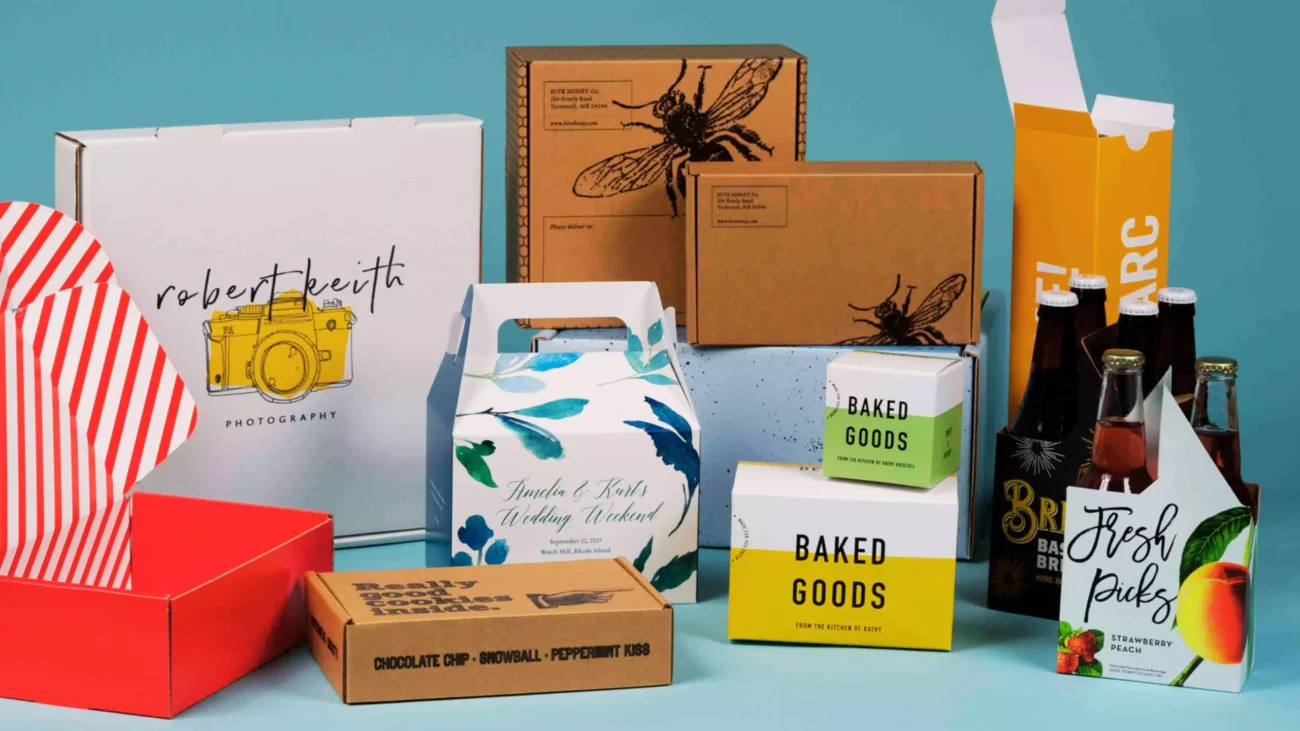In today’s competitive marketplace, custom packaging plays a crucial role in how customers perceive your brand. Thoughtfully designed packaging can build brand loyalty and make your product memorable, but poorly executed packaging can lead to negative impressions that affect your bottom line. At CustomizePackagingBoxes.com, we understand the importance of getting every detail right. Let’s explore some common custom packaging mistakes that could harm your branding and how to avoid them.
1. Ignoring Your Target Audience
One of the biggest mistakes companies make is overlooking their target audience’s preferences when designing packaging. Your packaging should appeal to your core customers, whether they prefer minimalist, eco-friendly, luxury, or vibrant styles. For example, a luxury product marketed in budget-looking packaging can confuse or alienate potential buyers.
Avoidance Tip: Conduct market research to understand what resonates with your audience. This may include color preferences, materials, and design trends that align with their values and lifestyle.
2. Overcomplicating the Design
Complex designs can detract from your brand’s message and make your packaging look cluttered. Overuse of colors, images, or fonts may create a confusing visual experience and distract customers from your product. Additionally, intricate designs can increase production costs, making packaging both expensive and less effective.
Avoidance Tip: Focus on a clean and cohesive design with minimal colors, fonts, and images. Stick to a consistent brand style that represents your company’s values and is easy for customers to recognize and remember.

3. Using Low-Quality Materials
Cheap or flimsy materials can lead to damaged products, which will hurt your reputation and lead to costly returns or replacements. Customers often judge the quality of the product based on the feel and durability of the packaging. Low-quality materials can make a premium product feel substandard, affecting customer trust.
Avoidance Tip: Choose materials that align with your brand’s quality and durability standards. Using high-quality, eco-friendly materials not only improves the product’s look but also appeals to eco-conscious customers who value sustainable packaging.
4. Forgetting Brand Consistency
Your brand identity should be clear in every aspect of your packaging. Using inconsistent colors, logos, or brand messaging can weaken brand recognition and confuse customers. When packaging varies widely from one product line to another, customers may not recognize your brand immediately, impacting loyalty and recall.
Avoidance Tip: Stick to a cohesive brand style across all packaging materials. Consistent colors, logos, and taglines create a unified look that strengthens your brand identity and improves brand recall among customers.
5. Overlooking Practicality and Functionality
While aesthetic appeal is important, functionality should never be compromised. Packaging that’s hard to open, doesn’t properly protect the product or creates waste can frustrate customers. For example, candle packaging that’s not heat-resistant or doesn’t protect the wax during transit can lead to melted or damaged items, leaving a poor impression.
Avoidance Tip: Ensure your packaging is both beautiful and practical. Test designs to see how well they protect the product and make adjustments as necessary. Consider ease of use, such as how easy it is to open, carry, and store, to ensure a positive customer experience.
6. Ignoring Sustainability Trends
Today’s consumers are more environmentally conscious than ever. Brands that ignore sustainable packaging trends can appear out of touch with consumer values. Overuse of plastic, non-recyclable materials, or excessive packaging can lead customers to choose a competitor with eco-friendly alternatives.
Avoidance Tip: Invest in sustainable packaging options, such as biodegradable or recyclable materials, and highlight these choices on the packaging. Small steps, like using eco-friendly inks or reducing package size, demonstrate that your brand values environmental responsibility.
7. Overlooking Clear Product Information
Customers want essential information at a glance, whether it’s the product’s ingredients, instructions, or unique selling points. Cluttered designs that lack clarity can make it difficult for customers to find what they’re looking for, potentially leading to a negative impression or hesitation to purchase.
Avoidance Tip: Present key information prominently, using readable fonts and clear headings. Think about what your customers need to know right away and make sure this information is visible without overwhelming the design.
8. Not Testing Your Packaging Design
Failure to test packaging can lead to unforeseen issues, such as how the design appears in different lighting or how durable the materials are in various shipping conditions. A design may look great on a screen but have issues when physically produced, such as color inconsistencies, text visibility, or size problems.
Avoidance Tip: Conduct multiple tests of your packaging design before mass production. This can include testing for color accuracy, durability, and how it fits in retail displays or shipping boxes. Testing will help you identify and correct issues before launching your product to customers.
9. Ignoring Unboxing Experience
The unboxing experience is a significant touch point for customer engagement, especially with the rise of e-commerce. Packaging that doesn’t create a positive experience can result in missed opportunities to make a memorable impression. Customers appreciate unique touches, such as branded tissue paper, thank-you notes, or simple but attractive packaging that enhances the excitement of opening the product.
Avoidance Tip: Add elements that make unboxing special without driving up costs. Small touches, like a branded sticker or thank-you note, can make customers feel valued and create an experience they’re more likely to share on social media.
10. Not Prioritizing Brand Transparency
Customers today value transparency, especially when it comes to packaging. Brands that fail to clearly communicate their values or make misleading claims can lose customer trust. For example, using vague terms like “natural” without certification can appear insincere.
Avoidance Tip: Use clear, honest language on your packaging to communicate your brand values and product features. Highlight any certifications, such as organic or cruelty-free seals, that back up your claims and build trust with customers.
Custom packaging is an extension of your brand and the first physical interaction your customer has with your product. Avoiding these common mistakes can help you create packaging that reflects your brand’s quality, values, and customer care. At CustomizePackagingBoxes.com, we specialize in helping brands achieve impactful, memorable packaging that aligns with their unique needs and budget. Connect with us to explore how we can help you design custom packaging that enhances your brand and delivers a positive customer experience.




